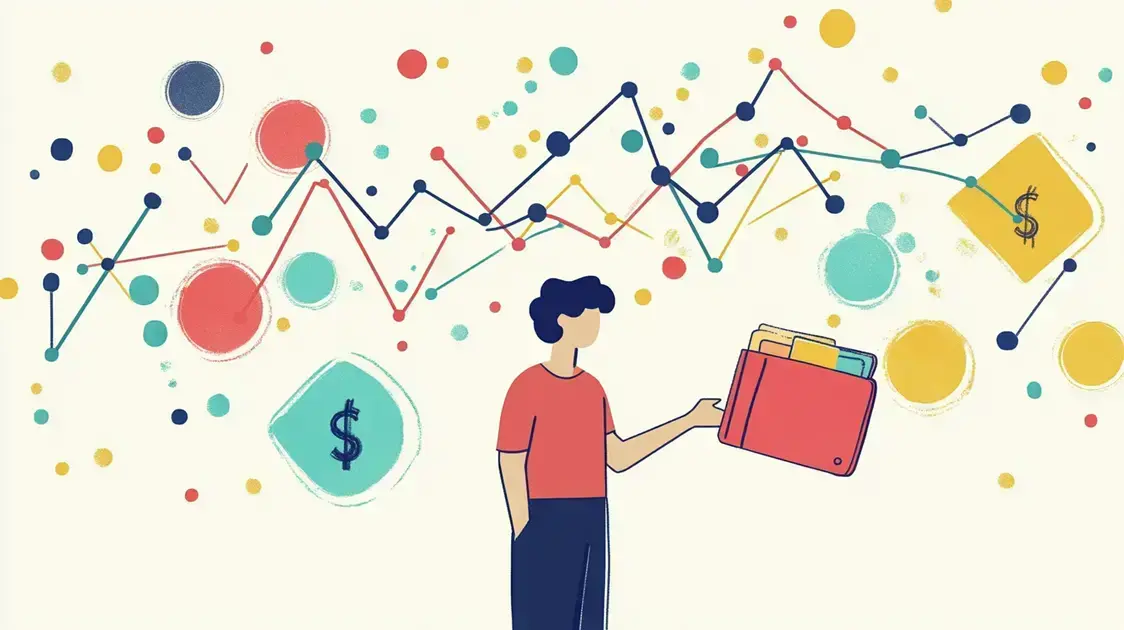Choosing between fixed vs variable rates is a key decision that can shape your financial future. Fixed rates provide stability and predictable payments, making them ideal for those who prefer consistency. On the other hand, variable rates can offer initial savings and greater flexibility, but they come with the risk of fluctuations over time.
Understanding how fixed vs variable rates work is essential when considering loans or investments. Fixed rates ensure steady payments regardless of market changes, while variable rates may start lower but can increase depending on economic conditions. Evaluating your risk tolerance and long-term financial goals is crucial in making the right choice.
If you’re unsure which option suits you best, analyzing the pros and cons of fixed vs variable rates can help you make a more informed decision. Keep reading to explore which rate structure aligns with your financial strategy and future plans.
Understanding Fixed Rates vs Variable Rates
When deciding between Fixed vs Variable Rates, it is essential to understand how each option affects your financial future. Fixed rates provide consistency, ensuring that your interest rate remains unchanged throughout the loan term. On the other hand, variable rates fluctuate, which can either save you money or increase your payments over time.
What Are Fixed Rates?
One of the key advantages of Fixed vs Variable Rates is the stability that fixed rates offer. With a fixed rate, your monthly repayment remains the same, making budgeting easier and protecting you from unexpected interest rate hikes.
Understanding Variable Rates
The other side of Fixed vs Variable Rates is the flexibility of variable rates. These rates change based on market conditions, meaning your repayment amount may decrease if interest rates fall. However, there is also the risk of higher payments if rates increase.
How They Impact Your Finances
The choice between Fixed vs Variable Rates can significantly impact your financial planning. Fixed rates are ideal for those seeking long-term stability, while variable rates may be beneficial for individuals who are willing to take on some risk in exchange for potential savings.
Which Option Fits Your Needs?
Ultimately, selecting between Fixed vs Variable Rates depends on your financial goals and risk tolerance. Keep reading to explore the advantages and disadvantages of each option to make an informed decision that aligns with your financial strategy.
Pros and Cons of Fixed Rates
Choosing fixed rates has its own set of advantages and disadvantages. Below are some key pros and cons of fixed rates that you should consider when deciding on your financial future.
Pros of Fixed Rates
One major advantage of fixed rates is stability. You always know what your payments will be, making it easier to budget your finances. This predictability is particularly beneficial if you are planning for long-term goals.
Another benefit is protection against rate increases. Even if market interest rates climb, your fixed rate stays the same, shielding you from higher costs.
Cons of Fixed Rates
However, there are some downsides. A significant disadvantage of fixed rates is that they often come with higher initial interest rates compared to variable rates. This means you may pay more at the start.
Additionally, if interest rates drop, you’re stuck with your higher fixed rate. This can result in missed opportunities to benefit from lower rates in the market.
In summary, while fixed rates offer reliability and protection, they can also limit your flexibility and result in higher costs if market conditions change.
Pros and Cons of Variable Rates

When considering variable rates, it’s important to weigh both the advantages and disadvantages. Here are some key pros and cons of variable rates you should know.
Pros of Variable Rates
A major advantage of variable rates is the potential for lower initial costs. These rates often start lower than fixed rates, which can save you money on monthly payments at the beginning of your loan.
Additionally, when interest rates are on a decline, you could benefit from decreasing payments over time. This makes variable rates particularly appealing in a falling interest rate environment.
Cons of Variable Rates
However, there are risks associated with variable rates. One significant disadvantage is the uncertainty of future payments. Your monthly payment can increase if interest rates rise, which may strain your budget.
Moreover, this unpredictability can lead to financial stress if you are not prepared for sudden changes in payments. Thus, while variable rates can offer lower costs initially, they carry a risk of increasing expenses over the loan period.
Weighing these pros and cons will help you determine if variable rates align with your financial strategy.
How Fixed Rates Work
Understanding how fixed rates work is vital for making informed financial decisions. With a fixed rate, the interest remains constant throughout the term of the loan or mortgage. This means you will always know exactly how much you need to pay each month.
How Interest is Calculated
When you take out a loan with a fixed rate, the interest rate is set at the time of signing the agreement. This predetermined rate is applied to your total loan amount, ensuring consistent monthly payments.
Loan Terms and Duration
Typically, fixed rates are offered for various durations, such as 15, 20, or 30 years. The longer the term, the lower your monthly payments will be, but you may pay more in total interest over time.
Impact of Market Changes
One of the benefits of fixed rates is that they are unaffected by market interest rate fluctuations. Even if rates rise or fall, your payment remains unchanged, providing predictability.
Choosing Fixed Rates
Fixed rates are ideal for individuals who prefer budget certainty and plan to stay in their loan for several years. This option suits those who fear rising interest rates in the future and want to secure their finances.
How Variable Rates Work
Understanding how variable rates work is essential for making informed financial choices. Unlike fixed rates, variable rates can change over time based on market conditions. This means your interest rate and monthly payments may fluctuate.
How Interest is Determined
Variable rates are usually linked to a benchmark interest rate, such as the prime rate. When the benchmark rate changes, your interest rate will adjust accordingly. This can lead to lower payments if rates decrease, but also higher payments if rates increase.
Adjustment Periods
The frequency of adjustments can vary. Most loans have specific adjustment periods, which could be monthly, quarterly, or annually. During these times, your lender will review and potentially change your interest rate based on current market conditions.
Advantages of Variable Rates
One key benefit of variable rates is the potential for lower initial rates compared to fixed rates. This can result in lower payments during the early phases of the loan, which may be appealing to borrowers.
Risks Involved
While there are benefits, there are also risks. If interest rates rise, your payments will increase, which might strain your budget. This unpredictability can lead to financial instability if you’re not prepared for potential increases.
When to Choose Fixed Rates

Choosing between Fixed vs Variable Rates depends on your financial situation and long-term goals. In certain scenarios, opting for fixed rates can provide more stability and predictability, making it the ideal choice for many borrowers. Understanding when to choose a fixed rate can help you make a more informed decision.
Budgeting Stability
If you value consistency, fixed rates offer peace of mind. Knowing your exact monthly payment helps manage expenses efficiently, which is a crucial factor in the Fixed vs Variable Rates decision.
Long-Term Financial Planning
For those planning for retirement or a child’s education, fixed rates provide a safeguard against rising interest rates. This stability allows you to maintain a structured financial strategy over the years.
Rising Interest Rate Environment
When rates are expected to rise, locking in a fixed rate can lead to long-term savings. By securing a lower rate today, you avoid higher borrowing costs in the future.
Low-Interest Rates
If current rates are favorable, choosing fixed rates ensures you benefit from today’s low costs throughout your loan term. This protects you from potential market fluctuations.
Long Loan Terms
For extended loan durations, such as mortgages, fixed rates are often the best option. They guarantee stable payments for years, reducing financial uncertainty.
Deciding between Fixed vs Variable Rates requires careful consideration of market conditions and personal financial goals. Keep reading to explore the pros and cons of each option and determine which best fits your needs.
When to Choose Variable Rates
Choosing variable rates can be advantageous in specific situations. Here are some scenarios when opting for variable rates may be the best choice.
Short-Term Loans
If you are taking out a loan for a short period, such as a few years, variable rates can be ideal. Their lower initial rates can save you money, especially if you plan to pay off the loan quickly.
Declining Interest Rates
In a market where interest rates are expected to decrease, variable rates may yield lower payments. This can result in significant savings as your interest charges drop over time.
Flexibility
If you value flexibility in your financial products, variable rates offer the ability to change with market conditions. This can help you take advantage of lower rates without needing to refinance.
Lower Initial Rate Benefits
Variable rates typically have lower initial rates compared to fixed rates. This can be beneficial for those who are starting out on a tighter budget, as it lowers the entry cost for loans.
Risk Tolerance
If you have a high risk tolerance and can handle potential increases in payments, variable rates may suit your financial strategy. Understanding the risks involved allows for better management of your financial health.
Choosing Between Fixed and Variable Rates
In your financial journey, the decision between Fixed vs Variable Rates plays a crucial role. Each option has distinct advantages and challenges, catering to different financial needs and risk tolerances. Understanding how these rates work can help you make a well-informed choice.
Fixed vs Variable Rates offer contrasting benefits. Fixed rates provide stability, ensuring predictable monthly payments, making them ideal for those who prioritize long-term planning. In contrast, variable rates may start lower and offer flexibility, appealing to borrowers comfortable with potential fluctuations.
Choosing between Fixed vs Variable Rates depends on economic conditions and personal financial goals. If interest rates are expected to rise, fixed rates can shield you from higher costs. However, in a declining interest rate environment, variable rates might allow you to save more over time.
Before making a commitment, it’s essential to evaluate how Fixed vs Variable Rates align with your financial strategy. Factors such as loan duration, risk tolerance, and market conditions play a key role in determining the best choice for your needs.
Understanding the impact of Fixed vs Variable Rates can make a significant difference in your financial future. Keep reading to explore the pros and cons of each option and determine which one suits your long-term goals best.
Check out our article on Loan Interest Rates to learn how they affect your borrowing costs and how to secure the best deals.
